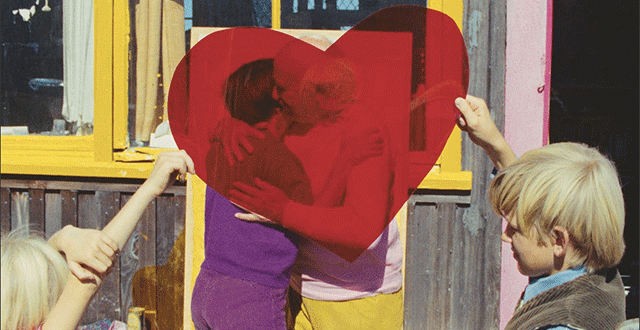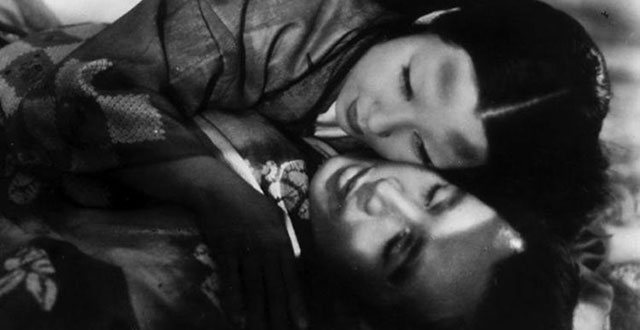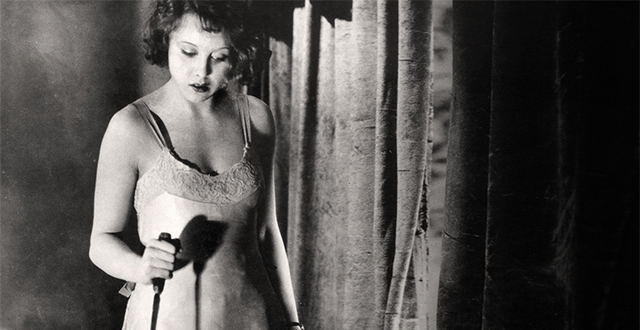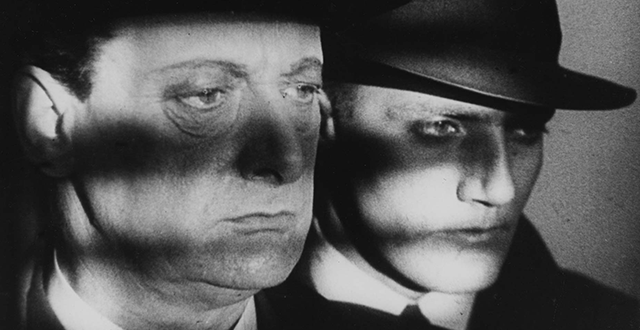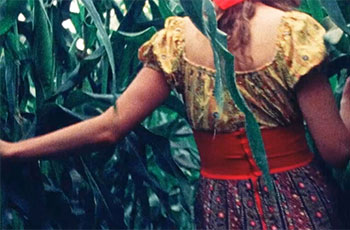News
COMMEMORATING 30 YEARS OF TFF
I met Agnès Varda in 1998. She was in New York for the Miramax re-release of Demy’s Young Girls of Rochefort, and I was invited to a breakfast by her publicist. I told her how much I loved her film about Demy, Jacquot de Nantes, and she scoffed—“Have you seen the new one, L’Univers de Jacques Demy?” Her son Mathieu sat silently by her side. “I’m having my son stay at the YMCA,” she told us. “It’s good for his character.”
We crossed paths quite often on the film festival trail, and she got in the habit of calling me whenever she was in New York. Agnès loved to stay on top of things—to be where everything was happening.
When I saw Faces Places, her 2017 collaboration with JR, I was stunned. She had chosen a younger collaborator whose temperament complimented and harmonized with her own, and it was as if she had been re-energized and re-oriented for a final artistic flowering. At the Q&A after the first screening at the New York Film Festival, the first question was about the encounter that never happens with her old friend Jean-Luc Godard near the end of the film. “Excuse me,” she said, “but this is how I know I’m in New York: the first question is about Godard.”
Agnès never had a fallow period as an artist—one might take issue with a title or two, but from La Pointe courte to Varda par Agnès her work is vitally alive. You can feel it so sharply in her editing, which is quite unlike anyone else’s. There is a breathlessness that runs throughout French art, an imperative to catch the lightning of existence in a bottle. It manifests in Agnès’s films in an extremely unusual way, as a reflection of something like satisfaction and confidence at meeting life head on, just as it is. I’m thinking of the moment when she stands before Cartier-Bresson’s touchingly modest gravesite and remarks to JR, “Actually, I’m looking forward to death.”
The last time I saw Agnès was in Marrakech in late 2018. Her daughter Rosalie had told me that her mother was ill, and I expected to find her infirmed, but it was quite the opposite. She conducted a master class with young Moroccan students, and if I hadn’t known she was dying I never would have guessed it.
The Film Foundation has worked with the Cineteca di Bologna and L’Immagine Ritrovata on the restorations of the four films that Agnès made in California. My favorite, Uncle Yanco, is a joyful hymn to color, light and fellow feeling. And it is completely and fundamentally a film that could have been made by only one human being on the planet.
I won’t pretend that I knew Agnès well, but I often think of my good fortune in knowing her even a little.
- Kent Jones
Follow us on Facebook, Instagram, and Twitter!
UNCLE YANCO (1967, d. Agnès Varda)
Restored by Cineteca di Bologna at L’Immagine Ritrovata in association with Ciné-Tamaris and The Film Foundation. Restoration funding provided by the Annenberg Foundation, the Los Angeles County Museum of Art (LACMA) and The Film Foundation.
BLACK PANTHERS (1968, d. Agnès Varda)
Restored by Cineteca di Bologna at L’Immagine Ritrovata in association with Ciné-Tamaris and The Film Foundation. Restoration funding provided by the Annenberg Foundation, the Los Angeles County Museum of Art (LACMA) and The Film Foundation.
LIONS LOVE (1969, d. Agnès Varda)
Restored by Cineteca di Bologna at L’Immagine Ritrovata in association with Ciné-Tamaris and The Film Foundation. Restoration funding provided by the Annenberg Foundation, the Los Angeles County Museum of Art (LACMA) and The Film Foundation.
MUR MURS (MURAL, MURALS) (1981, d. Agnès Varda)
Restored by Cineteca di Bologna at L’Immagine Ritrovata in association with Ciné-Tamaris and The Film Foundation. Restoration funding provided by the Annenberg Foundation, the Los Angeles County Museum of Art (LACMA) and The Film Foundation.
Out of the Vaults: "Ugetsu", 1953
Meher Tatna
Hailed by critics as one of the world’s greatest filmmakers, Kenji Mizoguchi started his career making silent films in the 1920s with remakes and adaptations of classic writers like Tolstoy and O’Neill. In the 1930’s he moved on to films that commented on the social upheavals that Japan was going through at the time. Transitioning from propaganda films in the war years of the 1940s like The 47 Ronin to period dramas focusing on women’s issues such as suffrage (Victory of the Women (1946) and My Love Has Been Burning (1949)), he was a feminist filmmaker ahead of his time. Through the years, Mizoguchi honed the poetic visual style that revealed his ‘tragic humanism,’ shown to best effect in his later period films, particularly in his masterwork Ugetsu Monogatari which was his 78th film.
Most of Mizoguchi’s oeuvre, which totals 90 overall, were silent films that are lost. A particular favorite of director Martin Scorsese, Ugetsu was restored in digital 4K through his The Film Foundation and the Kadokawa Corporation at Cineric Laboratories in New York, with funding from the Hollywood Foreign Press Association.
At a 2016 presentation of the restored film by the HFPA in Bologna at Il Cinema Ritrovato, Scorsese sent a video message in which he said: “I first saw Ugetsu on TV in 1958 and I have been obsessed ever since by its beauty and poetry. It was very hard to find the various elements to restore and save this masterpiece and I have to thank our friends of the Hollywood Foreign Press for making it happen.”
The restoration process used the master positive and dupe negative which were determined to be the best elements available. The film was scanned at Cineric and picture restoration and grading were supervised by Scorsese and Masahiro Miyajima, who had worked with cinematographer Kazuo Miyagawa for over 30 years. Audio mechanics performed the digital restoration of the soundtrack from the master positive. An internegative of the picture restoration and an optical soundtrack negative have been created for preservation, as well as 35mm film prints and DCPs for exhibition. The restoration was premiered at the 2016 Cannes Film Festival as part of Cannes Classics.
Ugetsu is based on two short stories, The House in the Thicket and The Lust of the White Serpent from Akirari Ueda’s 18th century Tales of Moonlight and Rain. Interwoven is Guy de Maupassant’s story Décoré!.
Mizoguchi instructed his two screenwriters Matsutaro Kawaguchi and Yoshikata Yoda thus: “The feeling of wartime must be apparent in the attitude of every character. The violence of war unleashed by those in power on a pretext of the national good must overwhelm the common people with suffering—moral and physical. Yet the commoners, even under these conditions, must continue to live and eat. This theme is what I especially want to emphasize here. How should I do it?”
In the civil war of 16th century Japan, a potter and his brother leave their families behind in order to profit from wartime demand for the potter’s wares in a neighboring village. Genjuro, the potter, played by Masayuki Mori, is hungry for wealth; Tobei (Eitaro Ozawa) wants glory as a samurai. Genjuro is seduced by a beautiful ghost, Lady Wakasa (Machiko Kyo), and Tobei endures much humiliation before he becomes a samurai by chance. Mizoguchi shows the suffering of the peasantry in wartime particularly through the plight of the wives as the men are blinded in the pursuit of their grandiose dreams.
The director has a signature “flowing scroll” of long, uninterrupted takes. He shoots mostly master shots, a majority with cranes. There are very few closeups. The title scenes are that of a medieval scroll reminiscent of a kimono. As his camera moves, he manages to straddle the real and the supernatural with ease, particularly in the famous lake scene where a mysterious man warns the protagonists of pirates before he dies. A keening soundtrack accompanies the mists and fog surrounding the boat on which the terrified peasants are huddled. Cinematographer Kazuo Miyagawa worked with Mizoguchi six times, including his last film, Street of Shame (1956). He later remarked that Ugetsu was the only film for which his work was praised by the master.
Mizoguchi was a perfectionist, often doing hundreds of retakes before he was satisfied and constantly asking for rewrites in the middle of shooting. He was also uncompromising on historical detail like the costumes, props, and suits of armor for the soldiers.
Fans of Mizoguchi's later films were mostly in the West as local audiences in Japan at the time did not have much interest in his work. Jean-Luc Godard declared him “the greatest of Japanese filmmakers, or quite simply one of the greatest of filmmakers.” He won the Silver Lion for best director in 1953 at the Venice Film Festival for Ugetsu, in competition with William Wyler’s Roman Holiday. In Keiko McDonald’s book Mizoguchi, she writes that it was his first trip outside Japan and he spent most of his time in his hotel room praying to a scroll, worrying about how he could return to Japan if he did not win. The film was also Oscar-nominated for best costume design in 1956. It was included in Sight and Sound magazine’s once-a-decade poll as one of the greatest films ever made in 1962 and 1972, and has a 100% positive rating on Rotten Tomatoes.
Kenji Mizoguchi died of leukemia three years after the release of Ugetsu.
Out of the Vaults: "Blackmail", 1929
Meher Tatna
Alfred Hitchcock had made nine silent films before Blackmail, and this thriller started production in 1929 as a silent film as well. In the middle of shooting, the producer, John Maxwell of British International Pictures, seeing the success of the American The Jazz Singer the previous year, asked Hitchcock to shoot part of the film as a talkie. While he only envisioned the last reel to be reshot this way, Hitchcock reshot practically the whole film with synchronized sound. Reshoots were done after the silent version was completed. Cameras and (cameramen) were confined to glass-fronted soundproof boxes so that the rattle of the rolling cameras was muffled. There are some plot differences between the two versions, while several scenes look the same in both movies. The first reel in both is the same -- the sound starts 6 ½ minutes into the film. The talkie was released two months earlier than the silent version, but that one made more money since most cinemas were not equipped for sound at the time. Even though it was ignored in subsequent years, some critics believe it is the superior one.
The film was based on Charles Bennett’s play of the same name which featured Tallulah Bankhead in the starring role on Broadway. Bennett and Hitchcock would collaborate on several more movies including The Man Who Knew Too Much (1934), The 39 Steps (1935), Secret Agent (1936), Sabotage (1936) and Foreign Correspondent (1940).
The poster for the film breathlessly proclaims:
THE FIRST FULL LENGTH ALL TALKIE FILM MADE IN GREAT BRITAIN
SEE AND HEAR IT
OUR MOTHER TONGUE AS IT SHOULD BE – SPOKEN!
100% TALKIE
100% ENTERTAINMENT
HOLD EVERYTHING TILL YOU’VE HEARD THIS ONE!
In the movie, Anny Ondra is Alice White, a shop-girl who is dating Scotland Yard detective Frank Webber, played by John Longden. The two quarrel in a teashop and she goes home with an artist, Mr. Crewe (Cyril Ritchard), who has invited her to see his studio. After some flirting, Crewe sexually assaults Alice and in self-defense, she stabs him. Distraught, she leaves the studio without her gloves. Webber is given the case, discovers Alice’s glove, and covers up the crime to protect his girlfriend. To complicate matters, she is then blackmailed by a man (Donald Calthrop) who says he saw her go up to the studio with the artist. He has her other glove.
Blackmail is considered the first British talkie with synchronized recorded sound as opposed to the “goat gland” sound films which were shot as silent films and had talkie sequences added after the shooting was completed. Czech star Ondra’s dialog was dubbed in the talkie as her accent was deemed unacceptable. Actress Joan Barry voiced her dialog off-camera into a microphone as Ondra mouthed her words during the scenes.
Over 90% of silent films made before 1929 have been lost, including some of Hitchcock’s early works. The Film Foundation, in partnership with the BFI National Archive, helped restore four silent films by Hitchcock, including both versions of Blackmail, as part of the BFI’s “Rescue the Hitchcock 9” program, completed in 2012. Principal restoration funding was provided by The Hollywood Foreign Press Association and The Film Foundation.
Film elements were scanned and restored digitally at 2K resolution and output back to 35mm film. BFI archivists completed a worldwide search for materials to examine as many existing copies of the films as possible. Some intertitles were reconstructed digitally, then returned to film and printed twice before being scanned and inserted into the digital master to give a filmic appearance to the new titles. The scans and restored data were preserved on data tape and 35mm restoration negatives were created for preservation and access.
The original camera negative was scanned at 4K resolution. Sections with the most severe damage were re-scanned with a wet-gate. Despite the significant curl of the film emulsion and delicate splices, a sharp scan with excellent tonal range was achieved, also allowing archivists to retain the film’s original intertitles.
Hitchcock’s talent for suspense and building tension is evident in this early work, and many scenes foreshadow classic moments in his later works. The struggle behind the bed curtains as Crewe tries to rape Alice flashes us forward to the shower scene in 1960’s Psycho. Alice’s groping for a knife out of her reach is reminiscent of Grace Kelly’s reaching for scissors in 1954’s Dial M for Murder. The scene of the denouement has a visual landmark, the British Museum, similar to the Statue of Liberty in Saboteur and Mount Rushmore in North by Northwest. Ondra was the first in a long line of blonde Hitchcock heroines in peril. And Hitchcock makes his signature cameo for the first time 10 minutes into the film as a passenger on the Underground bothered by a little boy. (He did make one in his The Lodger in 1926 – because of a shortage of extras – but he had his back to the camera.)
One of the best reviews Blackmail received was in the American newspaper The Bioscope, where the reviewer wrote: “We understand that Mr. Hitchcock began this production as a silent film and was then called upon to adapt his plans to meet the requirements of dialogue. He has certainly succeeded to admiration, for this is neither the mere adaptation of a stage play to the screen nor a silent film fitted with stage dialogue, and it may well be that Mr. Hitchcock has solved the problem of combining the two and helped towards assigning the true position of the sound film in the ranks of entertainment.”
The picture fell into the public domain as no one renewed the copyright. Therefore, a number of poor-quality versions of the film are available on VHS, DVD, and online, including on YouTube.
Blackmail was voted the best British film of 1929 in a poll of moviegoers. In a 1917 TimeOut poll, it was voted #59 in a list of best British
COMMEMORATING 30 YEARS OF TFF
In 2014, I was offered the chance to make a film based on the taped conversations between Alfred Hitchcock and François Truffaut that became the basis of Truffaut’s indispensable book about Hitchcock, and I jumped at it. I transcribed all 27 hours of their conversations myself, which was thrilling. As for the films, I’d been deep into Hitchcock’s work since I was 13. So were my sons. When they were children, they loved North By Northwest so much that we re-enacted set-ups in a series of Polaroids we took around the Plaza Hotel and the UN. A little later, my older son figured out where Manny Balastrero lived in Queens and guided the three of us out there.
As luck would have it, my friend Bruce Goldstein—the world’s greatest film programmer—showed the complete works of Hitchcock and Truffaut at Film Forum here in New York right around the time I was researching. I’d seen pretty much everything but had saved a few titles—The Manxman, for instance, which is now my favorite of his silents. I also revisited a lot of films, including Hitchcock’s first sound film and the first one made in England, Blackmail, which I hadn’t seen in years—it’s one of seven Hitchcock titles that The Film Foundation has helped to restore. The Czech actress Anny Ondra starred in both The Manxman and Blackmail, made back to back, and she mouthed all of her dialogue as the actress Joan Barry spoke it into a microphone just off-camera—live dubbing! The use of voices and sound effects as rhythmic stops or counterpoints to enhance the emotions between the characters is absolutely stunning.
In reference to Blackmail, Hitchcock told Truffaut that there was “only one thing missing in the silent pictures, and that was sound coming out of the people’s mouths and sound coming from the streets. But it didn’t warrant the big change that sound brought in… there was no need to abandon the technique of the pure motion picture the way it was abandoned when sound came in.” And he added: “So many of the films made today are photographs of people talking.” The final remark is crucial, because his creativity with sound is as true of Notorious or Rear Window or Frenzy as it is of Blackmail. Truffaut recognized this understanding of the art form as the very secret of cinema, practiced by the directors who began during the silent era and passed on by example to future generations. There are many reasons that so many of Hitchcock’s films seem, as Bob Dylan said of the first Carter Family recording of “Wildwood Flower,” as fresh as a daisy. His consideration of sound as an ever-dynamic and expressive element, as opposed to a delivery system, is one of the most important.
- Kent Jones
Follow us on Facebook, Instagram, and Twitter!
BLACKMAIL (1929, d. Alfred Hitchcock)
Restored by the BFI National Archive. Principal restoration funding provided by The Hollywood Foreign Press Association and The Film Foundation. Additional funding provided by Deluxe 142, Col & Karen Needham and the Dr Mortimer & Theresa Sackler Foundation.
